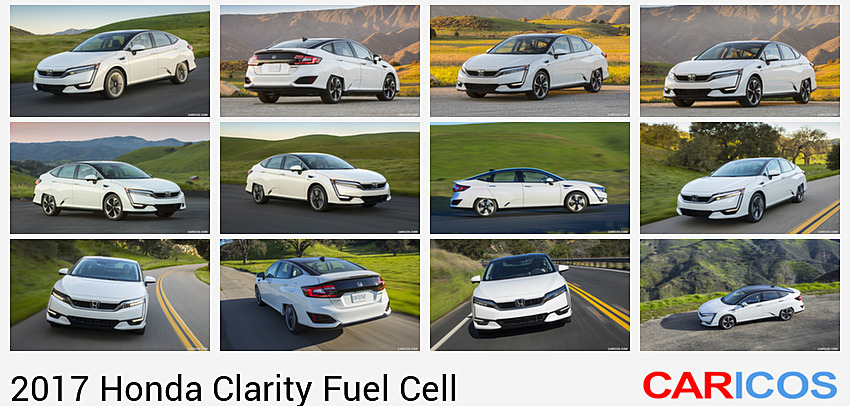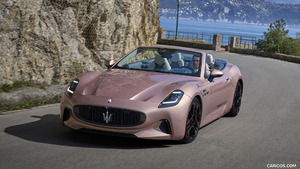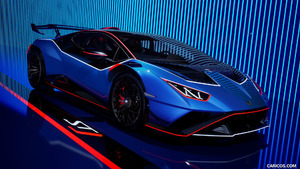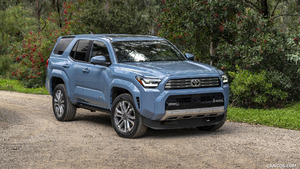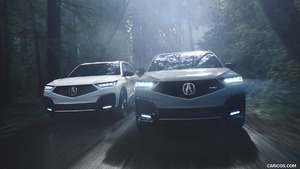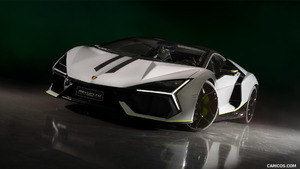Honda Clarity Fuel Cell
"Honda invests big in the future of auto industry with zero-emission vehicles. Honda Clarity line is the pioneer which currently has a fuel cell powered model, and expects to get an all-electric and plug-in hybrid additions later this year. Of course Honda is no stranger to fuel cell vehicles, as we had a Honda FCX experimental model a decade ago. 2017 Clarity Fuel Cell is a five passenger sedan with an EPA city rating of 69 MPGe. MSRP starts from $58,490, which can seem quite high, but it's less than a grand over Toyota Mirai FCV's MSRP of $57,500. Below is the press release from Honda:" Ed.
Honda Leading Towards a Hydrogen Society
Having identified hydrogen as a potential solution to the environmental issues faced by society, Honda began basic research on fuel cells as early as the late 1980s. In 2002, Honda became the first automaker in the world to receive approval by the U.S. government to sell fuel cell vehicles, and began leasing them in the U.S. and Japan. In 2008, Honda began leasing the FCX Clarity to consumers; it featured a dramatically advanced fuel cell stack, innovative sedan package, and a new dimension of driving feel. In 2016, Honda reached an even greater height with the next evolution of its fuel cell technologies.
The all-new 2017 Clarity Fuel Cell is an even more compelling vehicle that offers greater practicality than previous fuel cell vehicles. The Clarity Fuel Cell can be used on a daily basis just like a traditional gaspowered vehicle, but provides much more driving enjoyment and zero emissions. Honda is stepping into a new era with the aim of popularizing fuel cell vehicles. Honda also wants to create a movement towards a hydrogen society. Honda has already built an array of hydrogen technologies--technologies to “produce, use and connect” hydrogen--through the Clarity Fuel Cell project and the development of hydrogen stations and external power export devises.
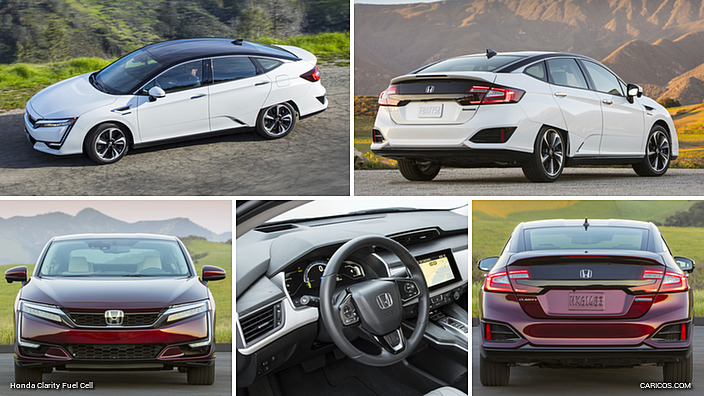 2017 Honda Clarity Fuel Cell
2017 Honda Clarity Fuel Cell
Honda continues to take on challenges to open the door to greater possibilities of hydrogen, to harness the joy of free mobility and realize a rich, sustainable society. On the way to realizing “the Joy and Freedom of Mobility” and “a Sustainable Society where People Can Enjoy Life,” Honda is committed to advancing hydrogen technologies leading to a fully-fledged hydrogen society.
The Clarity Fuel Cell is the first in the Clarity series of all-new electrified vehicles from Honda. Built on a common platform, the Clarity series also will include the Clarity Electric (BEV) and Clarity Plug-in Hybrid (PHEV) as Honda works to evolve and popularize electrified vehicles. Every electric vehicle on the market today has at least one barrier to overcome, whether size, affordability, range or recharging/refueling. The strategy behind the Clarity series addresses these issues through its spacious five-passenger cabin, focus on increased affordability, and expanding infrastructure. To achieve mass-market appeal, Hondaʼs product development pathway is aimed toward future full-scale mass production, rather than focused on a narrow group of users. To that end, Honda selected the “3-in-1 concept” that mounts the fuel cell powertrain under the hood like a conventional gasoline or hybrid vehicle, and realizes BEV and PHEV variants using the same platform, making Clarity the first vehicle in the industry to offer fuel cell, BEV and PHEV powertrain options on a single platform. This shared platform strategy will enable Honda to respond to infrastructure and market developments, provide customers nationwide with an ultra-low carbon vehicle that meets their lifestyle needs, and takes Honda toward higher volume sales of advanced powertrain products that will help to realize our dream for an ultra-low carbon mobility future.
- Clarity Electric. The Clarity Electric will be geared toward commuters who desire all-electric performance in a spacious, comfortable and premium-contented five-passenger sedan that fits their daily driving needs.
- Clarity Fuel Cell. Honda views fuel cells as the ultimate zero-emissions vehicle technology and the Clarity Fuel Cell offers early adopters the latest technology to be on the forefront of “what is next” while enjoying the convenience of short refueling times and the flexibility and confidence of a 366 mile EPA range rating*, the longest of any zero-emissions vehicle.
- Clarity Plug-In. The Clarity Plug-In hybrid will be the volume leader of the series, marketed in all 50 states, and having an anticipated all-electric driving range rating in excess of 40 miles and a total driving range comparable to that of a traditional gasoline-powered sedan.
Honda Is Taking Proactive Steps to Solve Environmental Issues.
What Honda Is Doing to Address Environmental Issues Honda has long been at the forefront of research on environmental issues facing the automobile industry. For example, Honda was the first manufacturer to meet the Clean Air Act of 1972 without the use of a catalytic converter by developing the CVCC engine. Since then, Honda has introduced numerous cars and technologies to further reduce emissions.
In its fight against global warming, Honda is working to minimize CO2 emissions by pursuing greater thermal efficiency for engines, developing hybrid systems, and other fuel efficiency-improving technologies.
In addition to these efforts, Honda is also working to curb societyʼs dependence on fossil fuels such as petroleum, one of the largest sources of harmful emissions. To this end, Honda is investing in the research and development of next-generation clean vehicles. They include plug-in hybrids (PHEVs) that minimize the use of gasoline, battery electric vehicles (BEVs) that use electric power instead of fossil-derived energy and fuel cell vehicles (FCVs) that generate electricity from hydrogen.
Reducing CO2 Emissions on a Global Scale
As emerging nations undergo a motorization boom and vehicle production increases around the world, the international society is imposing stricter requirements on environmental performance of vehicles every year. One projection based on the Energy Technology Perspectives (ETP) published by the International Energy Agency (IEA) forecasts the global CO2 emissions from transportation vehicles to nearly double from the 2010 level by 2050 due to growth in emerging nations, among others (see 6DS*1 in the graph on the right), and sets a target of reducing at least 60 percent of the CO2 emissions anticipated in 2050 (see 2DS*2 in the same graph).
In light of this, the auto industry must introduce various types of next-generation clean vehicles fueled by diverse energy sources like FCVs, BEVs and PHEVs, to curb CO2 emissions.
Honda Is Developing Various Clean Vehicles to Increasingly Reduce CO2 Emissions
Hondaʼs Next Generation Clean Vehicles
Honda is working to develop various next-generation clean vehicles meeting the needs and usage requirements of todayʼs consumers in order to reduce global CO2 emissions. PHEVs drive like an electric vehicle when traveling short distance in cities, but behave like a conventional hybrid vehicle when the battery level drops or on expressways for example, thereby minimizing the use of gasoline. On the other hand, BEVs and FCVs are so-called "zero emission cars" that do not emit CO2 while driving.
Battery capacity has a direct impact on driving range. For short-distance driving, Honda believes BEVs with relatively small battery capacities offer the best solution in terms of cost to the customer and the environment.
Honda believes FCVs are the ultimate clean vehicles as they release no CO2 emissions. This is because they generate electricity from hydrogen energy while driving. Furthermore, hydrogen vehicles refuel quickly and offer similar range to a gasoline engine vehicle. FCVs Generate Electricity from Hydrogen As They Drive.
FCVs carry a hydrogen tank instead of a gasoline tank found on conventional vehicles, and generate electricity inside the fuel cells as the hydrogen reacts with the oxygen contained in the air. This electricity, generated within the vehicle, drives the motor to move the vehicle with no CO2 or other harmful emissions being generated. FCVs achieve ultimate clean performance as water is the only byproduct of electricity generation in the vehicle.
Hydrogen Has the Potential to Realize an Energy Sustainable Society.
Virtuous Circle-type Energy Not Dependent on Fossil Fuel Hydrogen does not exist independently on Earth, but is contained in various substances from which it can be extracted. Hydrogen can be produced from natural gas and biomass, and also through water electrolysis using electricity generated from renewable energy such as solar, wind and hydro power.
As hydrogen can be produced in many different ways reflecting the geographical characteristics and unique weather of each region, society can look forward to establishing an ideal hydrogen cycle that is not dependent on fossil fuel. Hydrogen Energy Can Be Produced, Transported and Stored, ready for conversion into Electricity When Needed. Although electricity can be stored in batteries, storing a large amount of electricity is difficult. Normally electricity is generated at power plants and supplied continuously to cover anticipated usage; however, once hydrogen is produced, it can be compressed or liquefied and transported or stored in tanks. The stored hydrogen can then be converted to electricity through fuel cells to produce the necessary amount of electricity at the location where it is required. In other words, hydrogen energy offers much more flexibility in the way it can be used.
Honda Proprietary Technologies to Create a Hydrogen-based Society. Hydrogen for vehicle use can be produced using renewable energy and then transported or stored. Honda saw opportunities in these characteristics and built unique hydrogen technologies to realize a hydrogen society. Hydrogen is produced at a space-saving, easy-to-install smart hydrogen station using solar power and other methods. This hydrogen is then available to fuel FCVs that will use it to generate electricity as they drive. These FCVs can also function as small power stations, or mobile power supplies, and connect and supply electricity to portable external power export devices, homes or facilities. FCVs expand the possibilities of hydrogen energy, as they can also be utilized as an emergency power source in natural disasters.
Honda Has Achieved a Big Step in the Popularization of FCVs. The Evolution of Fuel Cell Stacks Was the Key to Success.
Smaller, Higher-performance Fuel Cell Stacks.
Honda began basic research on fuel cells in the late 1980s, which progressed to research on fuel cell vehicles a decade later. In the first prototype, based on an Odyssey minivan, the fuel cell system occupied most of the cabin space, barely leaving room for the driver. More research followed and in 1999, Honda premiered a test vehicle carrying a fuel cell stack (FC stack) under the floor. After that, Honda worked on improving the performance of fuel cells by increasing their efficiency output and in 2003 released the Honda FC Stack capable of starting at -20 degrees celsius. Making the fuel cell smaller while achieving these performance improvements remained a constant issue and Honda took on the challenge of meeting the mutually exclusive requirements of higher output and smaller size. The previous model FCX Clarity, a four-passenger sedan released in 2008, presented one such solution. It carried a dramatically smaller fuel cell stack which was able to be packaged within the center tunnel instead of under the floor. With the new Clarity Fuel Cell, Honda successfully reduced the size of the fuel cell stack by 33 percent (compared to the previous model) by increasing the output density.
Integrated Fuel Cell Powertrain Expands Package Flexibility.
Development Began with the Traditional Five-Passenger Sedan Layout.
From the early development stages, Honda aimed at a creating an attractive sedan offering a traditional five-passenger pacakge. In the Clarity Fuel Cell, this was accomplished by not only making the fuel cell stack smaller, but also integrating it with the FCVCU and drive unit. The result is the only fuel cell sedan*1 with the powertrain packaged under the front hood. This gives the Clarity Fuel Cell greater packaging flexibility, opening the way to many possible variants in the future.

